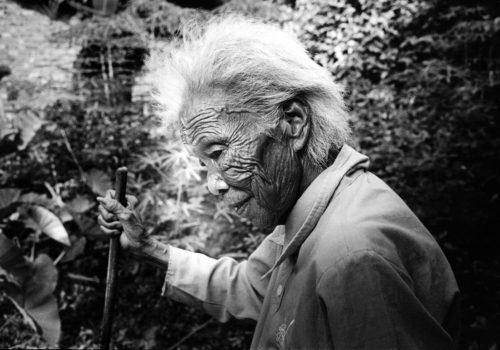The Musée Cernuschi exhibits Vanishing Existence by Kosuke Okahara. He writes :
I was 27 years old, and my journey as a photographer was just beginning. Although I had learned the technical aspects, I hadn’t yet found a way to express myself in a manner that felt meaningful to me.
One day, a close friend, a drinking buddy from school who worked part-time as a researcher and volunteered in remote villages in China, told me about hidden leprosy communities. He invited me to come with him. At first, I hesitated, contemplating the impact my work could have. Would photographing these villages help, or on the contrary, reinforce discrimination against those affected by leprosy?
This hesitation stemmed from the fact that much of the discrimination towards leprosy patients comes from their physical appearance, as the disease visibly alters their bodies. Photography, by its nature, captures what is in front of the lens, and I feared that it might inadvertently perpetuate the stigma.
Months passed, and my friend asked again. This time, he added that many of the patients were elderly and might pass away soon. Once they were gone, their stories would be forgotten forever. His words resonated with me, and I finally decided to go to southern China, where many of these villages are located, and document their lives.
Initially, I struggled with how to tell their story. Photography is about what’s in front of you, and I didn’t want the focus to be on their physical appearance. I realized the answer lay in simply photographing them as they existed—capturing their presence. Their existence in those spaces was the most important thing.
The villages were incredibly remote. One was deep in the forest, another required crossing two or three mountains, and one was located on a small island in a river. I vividly remember meeting an old man who lived alone, with his coffin stored inside his house, waiting for the inevitable.
When we visited the island village, my friend, our translator (who was also a friend), and I spent peaceful days with the villagers. I remember seeing them sitting under a big tree; it felt calm and serene. But as we crossed the river to leave, I realized the villagers hadn’t crossed that same river—just a few minutes wide—in decades. The gap between them and the outside world was far greater than the river’s width.
This was in 2007, and it marked a turning point for me. Spending time with these people and documenting their lives helped me understand what I wanted to achieve as a photographer. I learned that I needed to capture the essence of people. This might sound abstract, but it’s how I’ve worked ever since: by immersing myself in people’s lives and showing who they truly are through my lens.
This approach guided my work for Ibasyo, which was exhibited at Photoquai in Paris in 2011.
Kosuke Okahara
Kosuke Okahara : Vanishing Existence
Until December 8, 2024
Musée Cernuschi
7 Avenue Velasquez
75008 Paris
http://www.cernuschi.paris.fr
Meet Kosuke Okahara on November 8, 2024, at the museum.
Book your seat from
https://www.cernuschi.paris.fr/fr/activites-et-evenements?date=08-11-2024&type=&public=
















